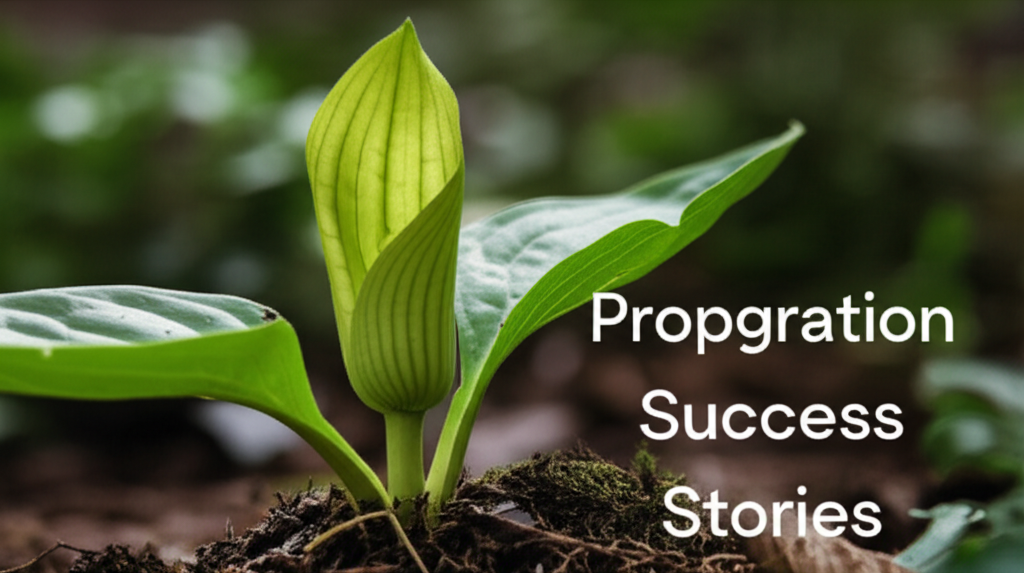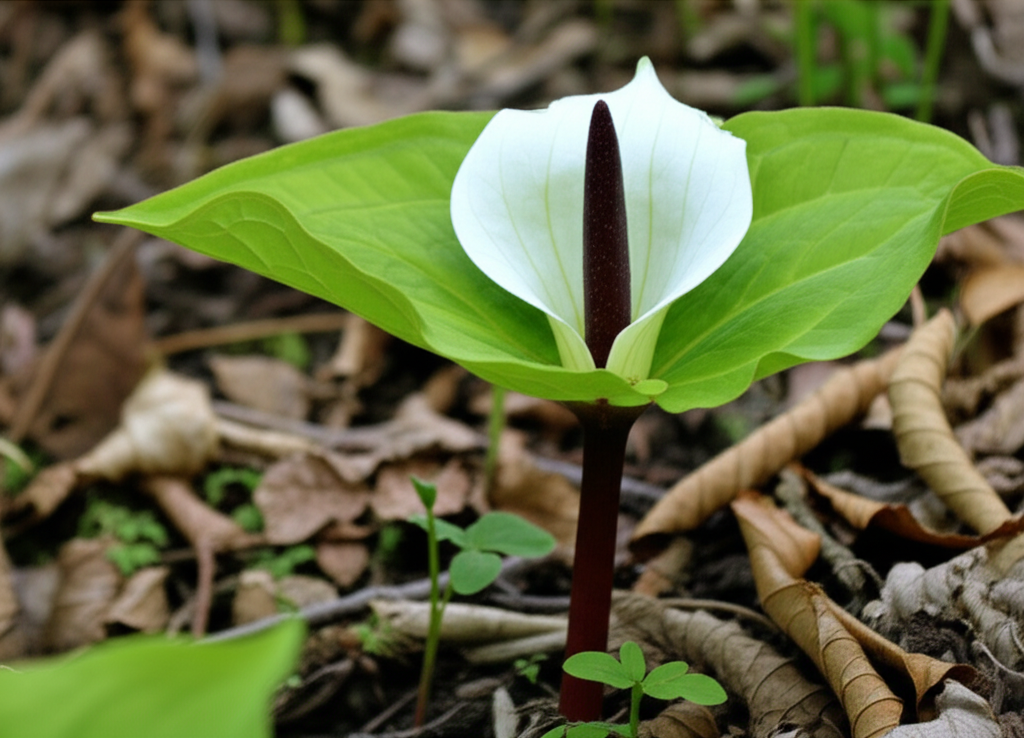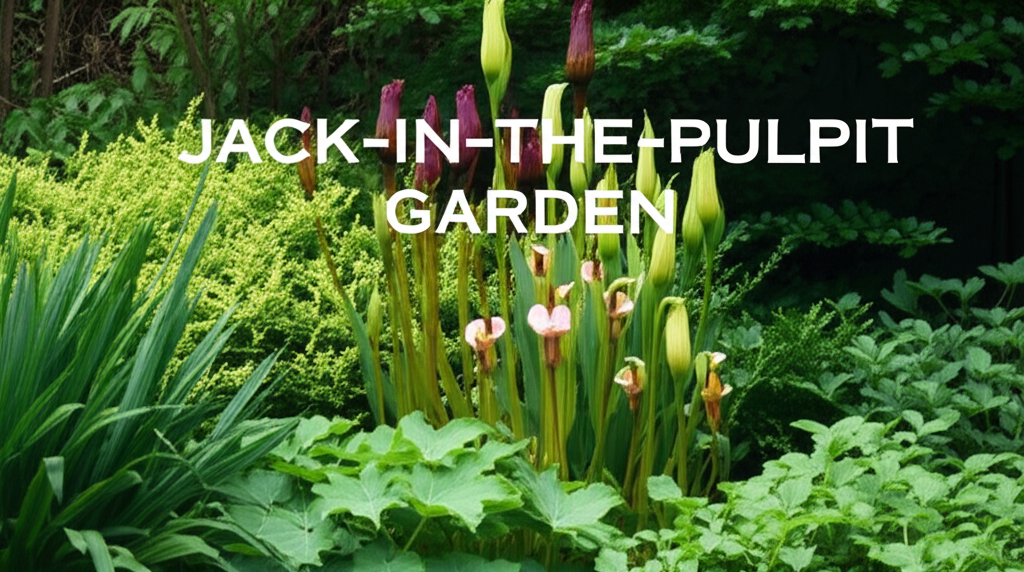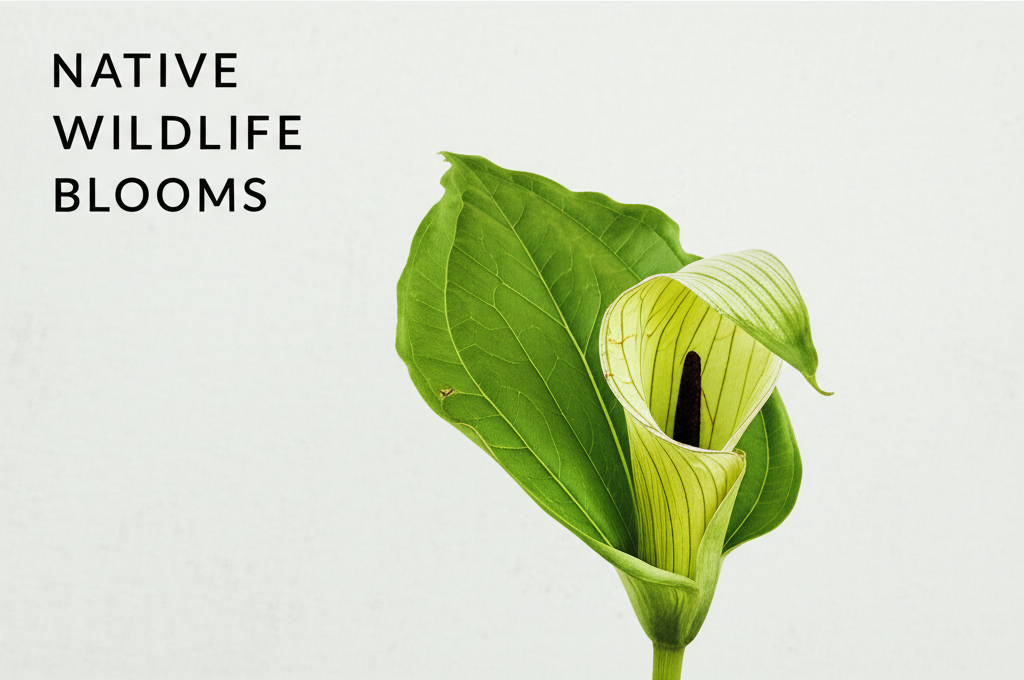Unlocking the Secrets: Successful Propagation of Jack-in-the-Pulpit
The enchanting Jack-in-the-Pulpit (Arisaema triphyllum), with its distinctive spathe and spadix, is a woodland gem that captivates gardeners and native plant enthusiasts alike. Its unique life cycle and requirement for specific conditions can make propagation seem daunting. However, a wealth of anecdotal evidence and documented success stories demonstrate that with the right approach, these fascinating plants can be successfully cultivated. This article delves into proven propagation methods, highlighting key factors that contribute to successful germination and growth, drawing from the experiences of dedicated growers and horticulturalists.
The Allure of the Jack-in-the-Pulpit
Before exploring propagation techniques, it’s essential to understand what makes the Jack-in-the-Pulpit so sought after. This herbaceous perennial thrives in moist, shaded woodland environments, often found carpeting forest floors. Its common name derives from the striking hooded spathe, which encloses the fleshy spadix, resembling a preacher at a pulpit. Beyond its aesthetic appeal, it plays a vital role in its native ecosystem, providing food and shelter for various wildlife. Successful propagation allows for the enjoyment of this native beauty in home gardens and contributes to its conservation efforts.
Key Propagation Methods for Jack-in-the-Pulpit

Jack-in-the-Pulpit can be propagated through several methods, each with its own advantages and optimal conditions. Understanding these distinctions is crucial for achieving high success rates.
Seed Propagation: A Patience Game
Growing Jack-in-the-Pulpit from seed is a rewarding, albeit lengthy, process. The seeds themselves have a unique germination requirement, often necessitating stratification to break dormancy.
Stratification: The Crucial First Step
- Cold Stratification: This involves exposing the seeds to a period of cold, moist conditions, mimicking winter. Seeds are typically sown in a well-draining seed-starting mix, lightly covered, and kept consistently moist. The container is then placed in a refrigerator (around 35-40°F or 1-4°C) for 90-120 days.
- Warm Stratification (Optional): Some sources suggest an initial period of warm stratification (around 68-72°F or 20-22°C) for 30-60 days before the cold period, which can further enhance germination.
Sowing and Germination
After stratification, the seeds can be sown in pots or trays filled with a sterile, acidic, well-draining seed-starting mix. A common mix includes peat moss, perlite, and compost. Seeds should be sown about 1/4 inch deep and the soil kept consistently moist but not waterlogged.
- Germination Environment: Ideal germination temperatures are between 65-75°F (18-24°C). A humid environment, such as a propagator or covering the pots with plastic wrap, can be beneficial.
- Patience is Key: Germination can take several weeks to several months, and not all seeds will germinate simultaneously. Some may even exhibit delayed germination, sprouting in the second year.
First Year Growth
Seedlings in their first year are typically small and may only produce a single, unifoliate leaf. They require similar conditions to mature plants: moist, shaded conditions and protection from harsh weather. Transplanting is best done when the seedlings are robust enough to handle, typically in the fall or early spring.
Vegetative Propagation: Utilizing Corms
Jack-in-the-Pulpit reproduces naturally via corms, which are modified stems that store nutrients. These corms can be divided or propagated from offsets.
Corm Division
- Timing: The best time to divide Jack-in-the-Pulpit corms is during their dormant period, typically in late summer or early fall, after the foliage has died back.
- Process: Carefully excavate the corms from the soil. Healthy corms are firm and plump. Gently separate any offsets or smaller corms attached to the parent corm. Ensure each division has at least one viable bud.
- Planting: Plant the divided corms at the same depth they were previously growing, typically 4-6 inches deep, in well-draining, humus-rich soil. Provide ample moisture and shade.
Offset Propagation
Jack-in-the-Pulpit corms often produce small offsets around their base. These offsets can be carefully detached and planted individually.
- Removal: During dormancy, gently pry the offsets from the parent corm.
- Planting: Plant these offsets in a moist, shaded location. They may take a few years to reach flowering size, but they will establish successfully with consistent care.
Leaf Propagation: A Less Common but Possible Method
While less common and often less successful than seed or corm propagation, some growers have reported success in propagating Jack-in-the-Pulpit from detached leaves. This method is more experimental.
- Leaf Selection: Choose a healthy, fully developed leaf from a mature plant.
- Cormlet Formation: The leaf stalk often contains a small cormlet at its base. This cormlet is the key to propagation.
- Planting: Carefully plant the leaf stalk with the attached cormlet in a moist, shaded, and humid environment. Success rates can be highly variable.
Factors Contributing to Propagation Success: Case Study Insights
Numerous growers have shared their experiences, highlighting critical factors that significantly impact propagation success. These insights often form the basis of successful cultivation practices.
Soil and Moisture: The Foundation of Growth
- Soil Composition: Jack-in-the-Pulpit thrives in acidic, organic-rich, and well-draining soil. A mix of compost, leaf mold, peat moss, and coarse sand or perlite is often recommended. Success cases frequently emphasize the importance of replicating the natural woodland floor environment.
- Consistent Moisture: Maintaining consistent moisture is paramount, especially during germination and early growth stages. However, waterlogging must be avoided, as it can lead to corm rot. Mulching with organic matter helps retain soil moisture and suppress weeds.
Light and Temperature: Mimicking Natural Habitats
- Shade is Essential: Jack-in-the-Pulpit prefers dappled shade or full shade, especially during the hottest parts of the day. Direct sunlight can scorch the leaves and stress the plant.
- Temperature Fluctuations: While not always explicitly managed, the natural temperature fluctuations of spring and fall seem to be beneficial for seed germination and corm establishment.
Dormancy and Rest Periods: Respecting the Plant’s Cycle
- Summer Dormancy: Jack-in-the-Pulpit often enters a period of dormancy during the dry summer months, with the foliage dying back. This is a natural process, and the corms should not be disturbed during this time.
- Winter Dormancy: The plants also experience winter dormancy, during which they are protected by snow cover in their native habitat. Replicating this dormancy with appropriate overwintering techniques for potted plants is crucial.
Troubleshooting Common Propagation Issues
Despite following best practices, propagation attempts can sometimes encounter challenges. Understanding these common issues can help growers overcome them.
Low Seed Germination Rates
- Improper Stratification: The most common culprit for low seed germination is insufficient or incorrect stratification. Ensure the seeds are kept consistently moist and at the correct temperature for the recommended duration.
- Non-Viable Seeds: Not all seeds produced are viable. Collecting seeds from healthy, mature plants and sowing them promptly can improve chances.
Corm Rot
- Overwatering: Excessively wet soil conditions, especially during dormancy, can lead to fungal infections and corm rot. Ensure excellent drainage and avoid overwatering.
- Poor Air Circulation: In humid environments, poor air circulation can exacerbate fungal issues.
Slow Growth and Lack of Flowering
- Young Plants: Seed-grown plants and small offsets will take several years to reach maturity and begin flowering. Patience is key.
- Inadequate Nutrients: While Jack-in-the-Pulpit doesn’t require heavily fertilized soil, a lack of organic matter can hinder growth. Top-dressing with compost annually can be beneficial.
Success Case Study Snippets
Many dedicated gardeners and native plant societies have shared their triumphs in propagating Jack-in-the-Pulpit. While detailed scientific studies are less common for this specific species’ propagation, the collective wisdom from horticultural communities provides invaluable guidance.
Anecdote 1: The Patient Seed Sower
A member of a local native plant society reported consistent success with seed propagation by meticulously following a two-stage stratification process: 90 days of cold stratification followed by sowing in early spring. They noted that approximately 40% of seeds germinated in the first year, with another 30% in the second, emphasizing that patience was the most critical factor.
Anecdote 2: Corm Division for Established Patches
A homeowner with an established patch of Jack-in-the-Pulpit successfully expanded their collection by dividing corms every 3-4 years in late autumn. They found that replanting the corms at a depth of 5 inches in amended soil with ample leaf mold resulted in a nearly 100% success rate for the divided sections.
Anecdote 3: Overwintering Success with Pots
A gardener in a colder climate successfully overwintered potted Jack-in-the-Pulpit by allowing the foliage to die back naturally, then moving the pots to an unheated garage. They kept the soil lightly moist throughout the winter and found this method prevented corm desiccation and ensured strong spring growth.
Comparative Analysis of Propagation Methods
The choice of propagation method often depends on the desired outcome, the availability of material, and the grower’s experience level.
| Method | Pros | Cons | Best For |
|---|---|---|---|
| Seed Propagation | Generates large numbers of plants; allows for selection of desirable traits; fulfilling for patient growers. | Slow; requires specific stratification techniques; germination can be erratic; first flowering can take 3-5 years. | Experienced gardeners; those seeking to establish large colonies; conservation efforts. |
| Corm Division | Faster results than seeds; higher success rate for established plants; can rejuvenate existing clumps. | Requires mature plants to divide; potential for damage to parent plant if not done carefully; limited by availability of parent corms. | Expanding existing collections; propagating prized specimens. |
| Offset Propagation | Relatively easy for mature plants; good success rate; less invasive than corm division. | Limited by the number of offsets produced; offsets may take several years to reach flowering size. | Beginners; propagating individual plants with good offset production. |
Step-by-Step Guide to Jack-in-the-Pulpit Propagation
This table outlines the general steps involved in the most common propagation methods.
| Phase | Seed Propagation | Corm Division |
|---|---|---|
| Preparation | Collect seeds from ripe berries (usually late summer/early fall). Clean seeds and air dry briefly. Prepare for stratification. | Wait for foliage to die back (late summer/early fall). Prepare a clean knife or trowel. |
| Stratification (Seeds) / Excavation (Corms) | Perform cold stratification (90-120 days in refrigerator). | Carefully excavate corms from the soil. |
| Sowing (Seeds) / Planting (Corms) | Sow stratified seeds 1/4 inch deep in a moist, well-draining seed mix. Place in a shaded location with consistent moisture. | Divide corms if necessary, ensuring each piece has a bud. Plant corms 4-6 inches deep in amended soil in a shaded, moist location. |
| Germination/Establishment (Year 1) | Monitor for germination (can take weeks to months). Keep soil consistently moist. Seedlings will develop a single leaf. | Water consistently. Corms will establish and may produce a small shoot or leaf in the spring. |
| Growth and Care (Subsequent Years) | Continue to provide shade, moisture, and rich soil. Plants will develop more leaves and eventually a flower spike. Transplant to permanent location when robust. | Provide consistent care. Plants will mature and produce flowers. Consider dividing again after 3-4 years. |
Conclusion: Cultivating a Woodland Wonder
The successful propagation of Jack-in-the-Pulpit is a testament to understanding and respecting its specific ecological needs. By diligently applying techniques like proper seed stratification, careful corm division, and providing the ideal environment of moist, shaded, and humus-rich soil, gardeners can reliably cultivate this captivating woodland native. The shared experiences and consistent results from dedicated growers underscore that with patience and attention to detail, the magic of the Jack-in-the-Pulpit can be brought into any suitable garden setting, contributing to both personal enjoyment and the preservation of our native flora.


